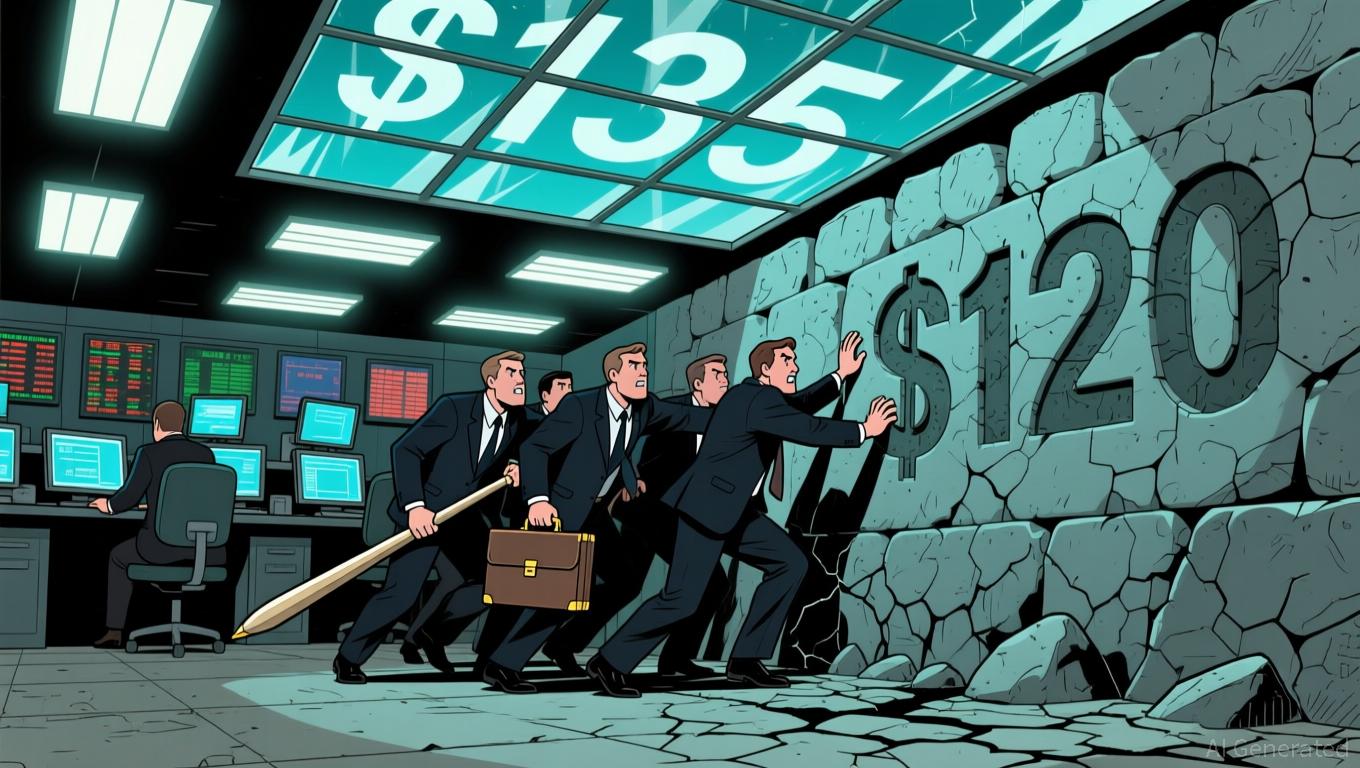PENGU USDT Selling Alert and Stablecoin Price Fluctuations: An Important Reminder for Investors
- PENGU USDT's 28.5% plunge in late 2025 exposed systemic risks in stablecoin ecosystems, highlighting vulnerabilities in USDT-backed tokens amid regulatory scrutiny. - USDe's October 2025 depegging to $0.65 triggered $20B losses in DeFi, revealing algorithmic stablecoins' fragility during market stress and leverage-driven feedback loops. - EU's MiCA ban on algorithmic stablecoins and U.S. GENIUS Act reforms aim to mitigate risks, but large stablecoins like USDT remain exposed to liquidity crises and cross
PENGU's Price Swings: Reflecting Stablecoin Vulnerabilities
PENGU's price movements in November 2025 demonstrate the risks and rewards of stablecoin exposure. The token jumped 12.8% on November 18, mirroring Bitcoin's 4.3% increase, yet

Systemic Threats in Algorithmic Stablecoins: Insights from USDe's Loss of Peg
When algorithmic stablecoin USDe lost its peg in October 2025—dropping to $0.65 amid U.S.-China trade disputes—it exposed major flaws in the stablecoin market.
This episode brings to light a larger issue: the tight links between stablecoins and the DeFi ecosystem. For example, the PENGU USDT pair is highly susceptible to depegging events,
Governance Shifts: Efforts to Prevent Liquidity Shocks
Regulators have ramped up their response to these risks in 2025. The EU's MiCA regulations have outlawed algorithmic stablecoins,
Yet, significant hurdles remain. Major stablecoins like USDT and USDC, which are heavily invested in traditional financial instruments,
Investor Insights: Strategies for Managing De-Pegging Risks
The PENGU USDT sell-off is a clear signal for investors to re-evaluate their stablecoin strategies. Recommended approaches include:
1. Spreading Stablecoin Investments: Favoring regulated, asset-backed stablecoins such as USDC or EURS, which are less likely to suffer from algorithmic breakdowns.
2. Keeping an Eye on Redemption Activity: Watching liquidity flows and redemption processes, especially for tokens linked to more volatile stablecoins like USDT.
3. Using Derivatives and Hedging Instruments: Employing futures or options to protect against losses in stablecoin-backed assets.
As the market adjusts to the fallout from USDe's depegging and PENGU's price swings, one thing is certain: the dominance of opaque, algorithmic stablecoins is fading. Investors must now navigate a market where transparency, regulatory adherence, and robust liquidity are essential.
Disclaimer: The content of this article solely reflects the author's opinion and does not represent the platform in any capacity. This article is not intended to serve as a reference for making investment decisions.
You may also like
Law Firms Take Action Against Corporations Amid Rising Investor Lawsuits
- U.S. law firms like Schall and Gross are leading class-action lawsuits against corporations for alleged investor misrepresentations across sectors. - Cases involve DexCom , MoonLake , Beyond Meat , and Stride , accusing them of concealing risks, overstating drug efficacy, and inflating enrollment figures. - Legal actions highlight SEC's intensified focus on biotech disclosures and edtech compliance, with deadlines set for investor claims by late 2025-2026. - These lawsuits emphasize corporate accountabil
Solana News Update: Solana ETFs Attract $476M While Death Cross and $120 Support Level Approach
- Solana ETFs attract $476M in 19 days, driven by Bitwise's 0.20% fee BSOL ETF with $424M inflows. - Technical indicators show a death cross and $120-$123 support test, with RSI at oversold 33 amid stagnant price action. - Institutional confidence grows via Franklin Templeton's fee-waiver strategy, contrasting Bitcoin/Ethereum ETF outflows of $5.34B. - Whale accumulation and on-chain growth hint at long-term buying, but $140 resistance remains unbroken despite ETF inflows.

XRP News Today: ADGM's Authorization of RLUSD Establishes International Standard for Institutional Stablecoin Compliance
- Ripple's RLUSD stablecoin gains FSRA approval for institutional use in Abu Dhabi's ADGM, effective November 27, 2025. - The $1.2B market-cap stablecoin features 1:1 USD reserves, third-party audits, and compliance with ADGM's transparency standards. - ADGM's approval aligns with its strategy to position Abu Dhabi as a global digital asset hub through regulated fiat-referenced tokens. - Ripple's Middle East expansion includes partnerships with UAE banks and regulatory licenses in Dubai, Bahrain, and Afric

Pi Network Boosts Web3 Gaming Innovation Through New Strategic Partnership
